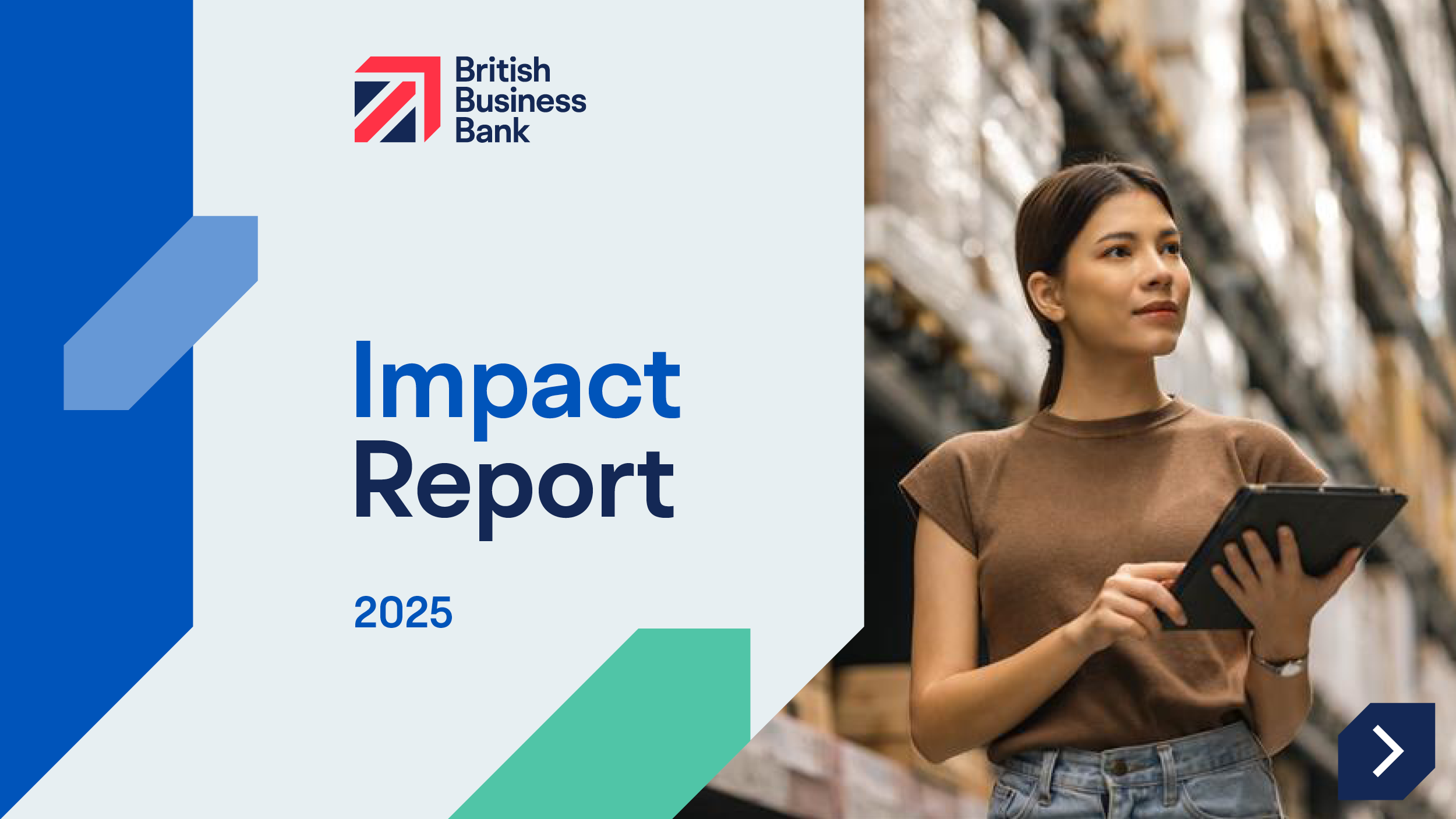
Download full report
Our 2025 Impact Report sets out the impact of the British Business Bank’s activity on smaller businesses across the UK’s Nations and regions.
Impact Methodology
This report analyses the impact of finance facilitated by the Bank for businesses newly funded over the 2024/25 financial year.
The approach for this year’s report is similar to our 2024 Impact Report and our Power of 10: 10 Year Impact Report.
We model the expected impact generated by businesses supported using the Bank’s economic appraisal model. This model has been independently verified by a third party to ensure it is fit for purpose.
For each business, we use details of which programme(s) they have been funded by to select the appropriate set of parameters to apply, through the economic appraisal model, to estimate the impact we would expect the business to achieve. These parameters draw on evidence from the Bank’s programme evaluations, monitoring information and also from analysis of business performance using Companies House data. They allow the economic appraisal model to provide an estimate of the expected impacts on business employment, turnover and GVA over the lifetime of the loan or equity investment, which can range between four and 10 years depending on the specific programme.
Additionality parameters included in the model cover finance additionality at the business level, fund level additionality if relevant, outcome additionality, and product market displacement. Additionality parameters have been applied to estimates of jobs created, additional turnover and additional GVA. Jobs supported figures have not been adjusted for additionality and are based on the initial size of businesses supported. All figures are presented in nominal terms.
The impact metrics in this report only consider the direct impact on employment and turnover growth of businesses funded by one of the Bank’s finance programmes.
The Bank also makes a wider impact on finance ecosystems through its activities. This includes the UK Network, which engages with local stakeholders, and the Finance Hub, which provides guidance to businesses about the types of finance options available to them. It is not yet possible to quantify these wider ecosystem impacts, but they are an important part of the Bank’s activities.
The estimates of the proportion and number of newly supported businesses that may have used some of their finance for environmental objectives are based on surveys performed as part of several of the Bank’s programme evaluations. These surveys give proportions of the programme beneficiaries that used some of their finance toward environmental objectives such as reducing their own carbon emissions or developing new products or services that might yield environmental benefits. The questions do not specify how much finance has been used toward these aims and in many cases, it may be a small proportion.
Coverage
The report only assesses impact for businesses that have been newly funded by the Bank in 2024/25 or that have been newly funded by an additional Bank programme.
Businesses that have received further funding from a programme that has already funded them before 2024/25 are not modelled in this report. Impact is only modelled for UK businesses.
For most programmes, data on businesses supported were only available for Q1 to Q3 of 2024/25 at the time this document was prepared. Consequently, for these programmes a full year picture of businesses supported has been estimated by extrapolating Q1 to Q3 data over a full year.
This extrapolation used data on the deployment of public funds, which were available for the full year at the time of analysis, to estimate the numbers of businesses supported in Q4.
Data on the deployment of public funding cover the funds that our delivery partners draw down from us to facilitate finance flows to beneficiary businesses. The figures do not include the central running costs of the Bank. The deployment figures do not include the value of provisions for expected credit losses, nor do they include the value of the economic capital held to facilitate the ENABLE Guarantee programme.
Data on the total flows of finance include both lending offered through the Bank’s guarantee schemes and the private capital accompanying the deployment of public funds on our debt and equity schemes. This private capital includes funds crowded in at both the fund level and the deal level.
Q4 values for flow and private sector capital have been extrapolated for programmes where data were not available at the time of analysis.
Lending guaranteed covers the entire value of facilities provided. For example, the Growth Guarantee Scheme has a guarantee covering 70% of each facility but we include 100% of the facility value in our lending guaranteed totals.
It is not currently possible to estimate the impact of the following programmes, and these are excluded from both the finance flow and impact figures:
Investment Programme Fintech and Structured Capital Solutions:
There is currently no evaluation evidence for these programmes. The impact of the Bank’s funding is difficult to directly measure as it supports greater competition and diversity of supply in the market. The effectiveness of the Tier 2 capital provided by the Bank to a challenger bank is measurable, but it supports the whole bank. Therefore, it is often not entirely allocated to smaller business lending. Even when it is, it is not possible to know which businesses have benefited from this capital.
ENABLE Build:
No evaluation evidence is currently available for ENABLE Build. This programme increases the amount of lending banks can support without the need to raise additional capital and supports non-bank financial institutions in raising larger amounts and cheaper funding. This in turn allows them to lend more and often at lower interest rates.